- this howto is for you if
- you have never used Go and are looking for a pragmatic way to use it in your projects
- want to create command line tools that speed up your development, e.g. scripts like Angular's
ng generate component component-name, but for your own projects
- what we will build
- we will start with a React site that reads a JSON file of flashcards
- and change it so that we can update a simpler text file of flashcards which we parse into JSON with an npm command that executes a Go script
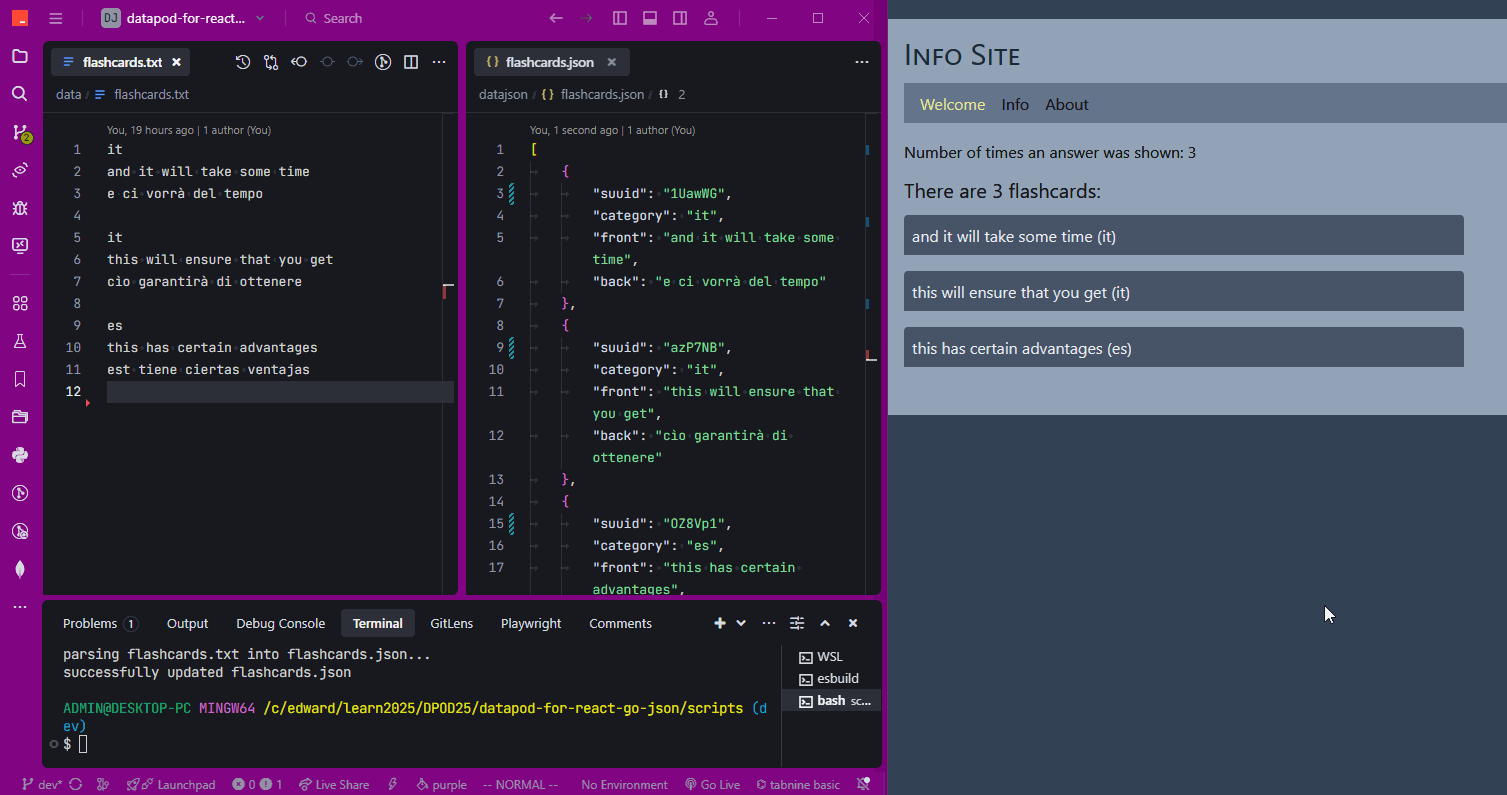
- what we will do
- we will set up a Vite React site that shows flashcards from data in a JSON file
- we will set up Go so that we can run an npm script which parses a text file into the JSON file
- note that the idea here is not to use Go to create an API
- but to run scripts that e.g. create or alter JSON and.tsx files, etc.
- this is the idea of Datapod, to be able to execute scripts that help you code faster
- this is somewhat like in Angular the command to create a component:
ng generate component component-name
- this is somewhat like in Angular the command to create a component:
- this howto the first steps in building a Datapod called "Datapod for React/Go/JSON"
- so what we do is realistic
- but the steps in this howto are just enough to get up and running with Go scripts that can be executed from the command line
- which is useful in any project if you want to quickly make automated tasks
- and you will quickly find that Go is a pleasant language to work in: simple and pragmatic
- of course a further concept of Datapod is that eventually I will build a backend which in turn allows the frontend to execute these commands
- this will allow e.g. a developer to fill out a form and click a button in the frontend in order to (1) create a page, (2) parse data, etc.
- code is here
- live-coding video of this howto is here
- >>> 1. install Go, clone the React site, and create two npm scripts which each run a test Go script
- install Go: ../installhttps://go.dev/doc/install
- create a Vite React site by creating a repo with this template and cloning it locally: ../datapod-for-react-jsonhttps://github.com/edwardtanguay/datapod-for-react-json
- in root, create "scripts" directory
- in the bash shell, go into that scripts directory
go mod init github.com/edwardtanguay/datapod-for-react-go-json- change this to a GitHub name in your control and the name of your project: "github.com/yourname/yourproject"
- this will create a go.mod file
- now create these directories and files:
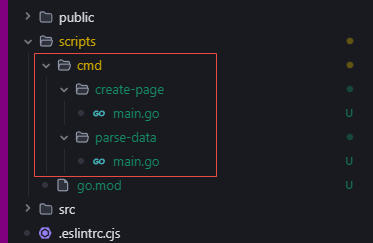
- /scripts/cmd/create-page/main.go
- package mainimport "fmt"func main() {fmt.Println("this will create a new page in the app")}
- /scripts/cmd/parse-data/main.go
- package mainimport "fmt"func main() {fmt.Println("this will parse data in a text file into a JSON file")}
- in package.json, add these two npm script commands to run these Go commands
- "cp": "cd scripts/cmd/create-page && go run .","pd": "cd scripts/cmd/parse-data && go run .",
- note that these commands change into the directory first, then run the script from there
- this will be important when we import functions from with relative paths later
- execute the npm commands from the command line
npm run cpnpm run pd
- >>> 2. start React site and create text flashcard file
- start React site
npm inpm run dev
- note that the flashcards showing on the Welcome page are being loaded from the /datajson/flashcards.json file
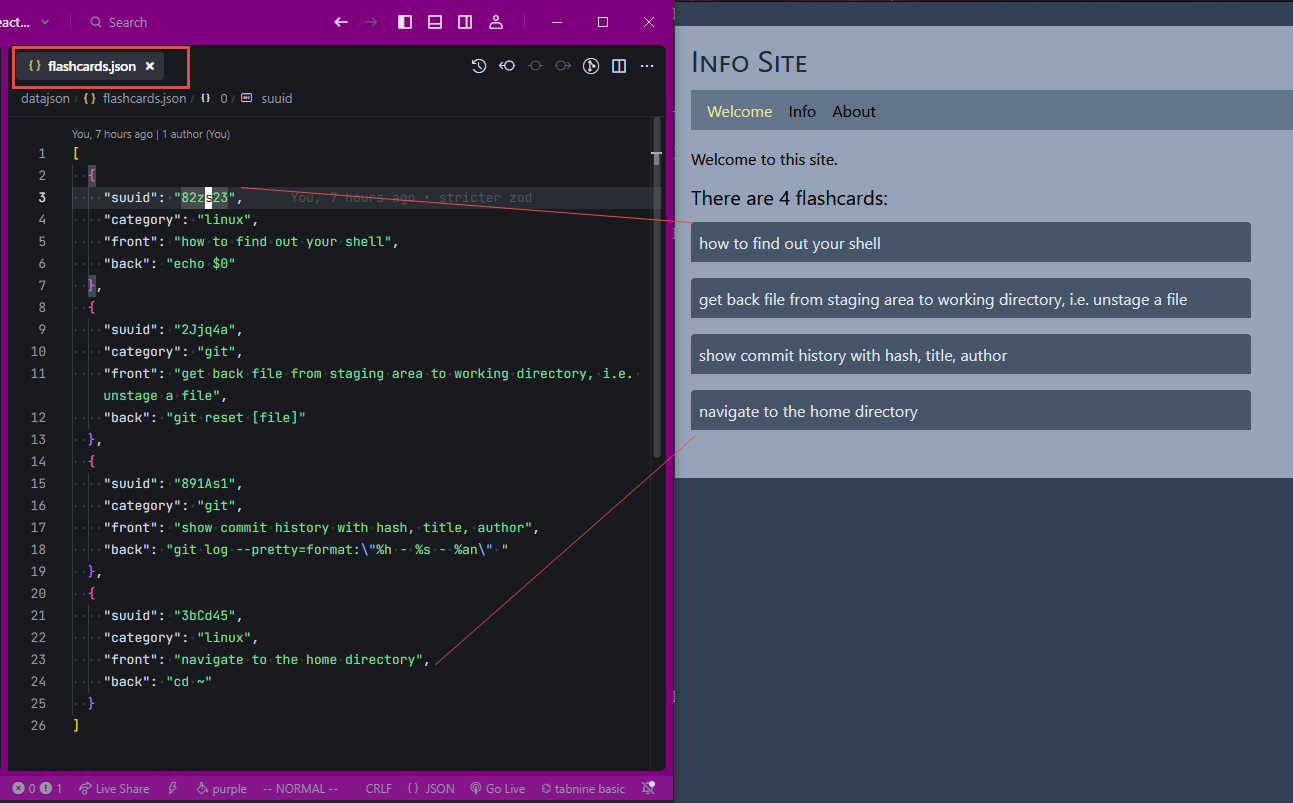
- create /data/flashcards.txt
- itand it will take some timee ci vorrà del tempoitthis will ensure that you getcìo garantirà di ottenereesthis has certain advantagesest tiene ciertas ventajasesin such a way thatde tal manera que
- we will now program the parse-data script so that it parses this text file flashcard objects, and then overwrites the flashcards.json file with this new data
- start React site
- >>> 3. set up utilities that can be used by any command
- we have two scripts, create-page and parse-data, that we want to program
- and in my Datapod there will be many more scripts, e.g. create-component, delete-page, etc.
- all of these scripts should be able to use a common library of tools
- this is what we are going to set up now
- create this folder and files
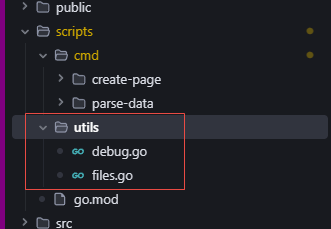
- debug.go
- package utilsimport "fmt"/*Output information in console in a uniform waydevlog("no files are locked")devlog(fmt.Sprintf("There are %d flashcards.", len(flashcards)))*/func Devlog(line string) {fmt.Printf("DEBUG ### %s ################################\n", line)}
- files.go
- package utilsimport ("os""strings")/*Get all lines from a file as a slice of stringslines := getLinesFromFile("../../notes.txt")use relative path*/func GetLinesFromFile(fileName string) []string {byteContents, err := os.ReadFile(fileName)if err != nil {panic(err)}contents := string(byteContents)lines := strings.Split(contents, "\n")for i, line := range lines {lines[i] = strings.TrimSpace(line)}return lines}
- note that the funtions Devlog and GetLinesFromFile are both capitalized
- this is important in Go in order for them to be imported from other files
- in the create-page script, let's use the debug function
- create-page/main.go
- package mainimport ("datapod-for-react-go-json/utils")func main() {utils.Devlog("this will create a page")}
- watch how the Trae editor works with Go to give you an easy developer experience of importing what you need:
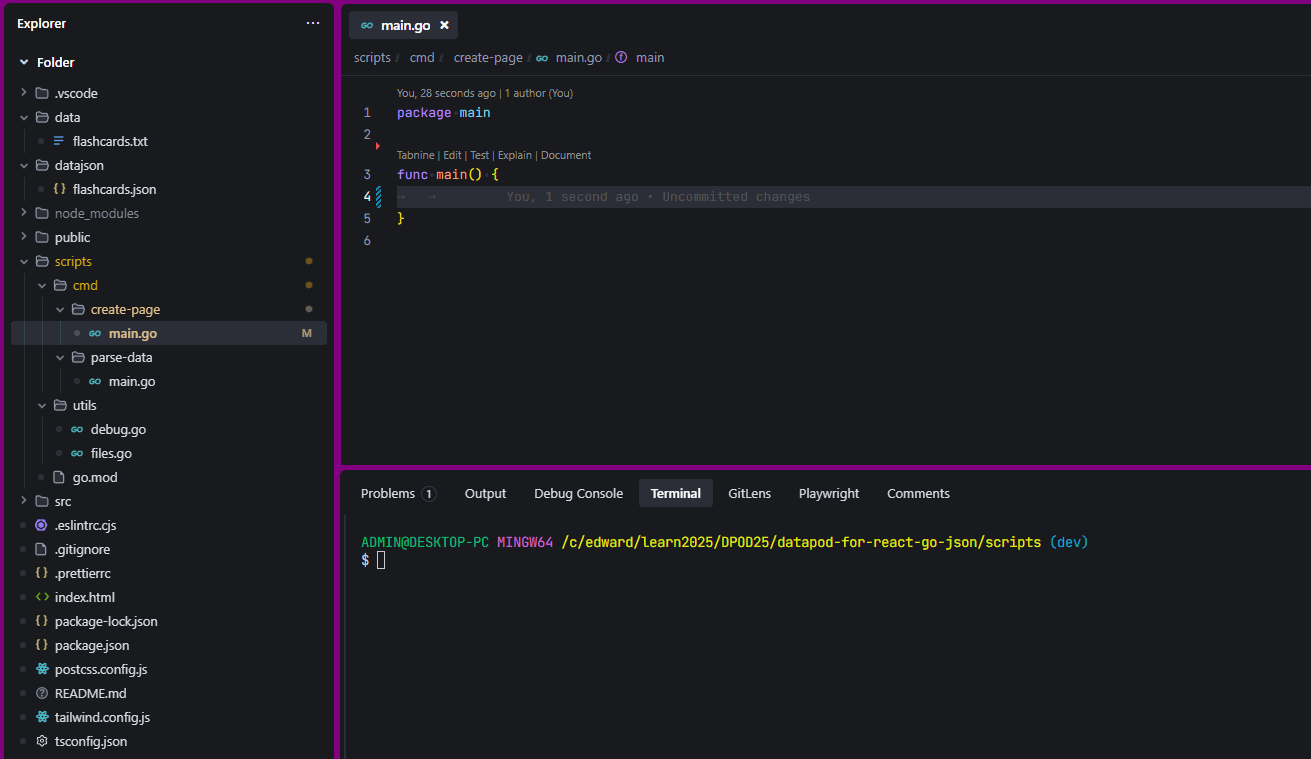
- this should also work in VSCode or Cursor
- notice also that the
/*...*/comment block above your utility functions will show up in these editors as well, which gives you context-related help on the functions you are using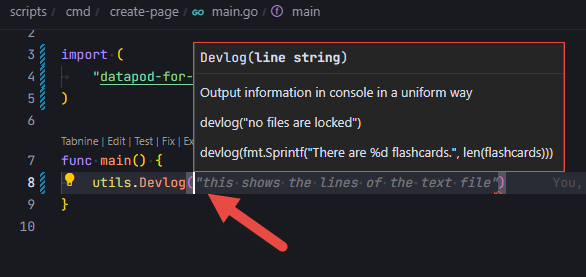
- now let's use the file utility function in the parse-data script
- parse-data/main.go
- package mainimport ("datapod-for-react-go-json/utils""fmt")func main() {utils.Devlog("this shows the lines of the text file")lines := utils.GetLinesFromFile("../../../data/flashcards.txt")for i, line := range lines {fmt.Printf("%03d: %s\n", i+1, line)}}
- execute the command:
npm run pd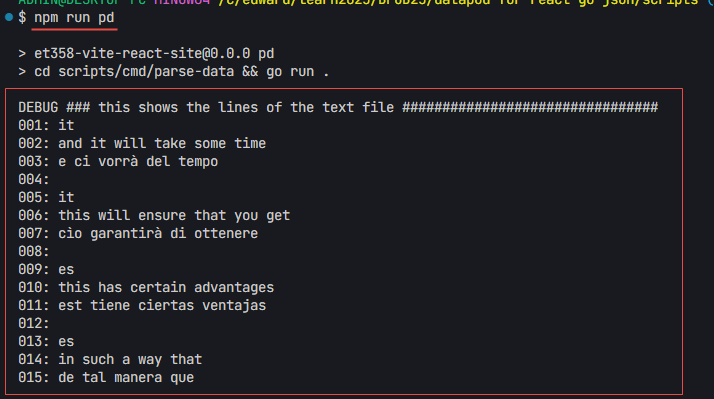
- >>> 4. program the parse-data script to convert the text file of flashcards into JSON
- first we need a utils function to create a random suuid
- utils/general.go
- package utilsimport ("crypto/rand""math/big")/*Return a random suuid (short uuid = 6 characters)suuid := GenerateShortUUID()returns e.g. "q35HZa"*/func GenerateShortUUID() string {const charset = "ABCDEFGHIJKLMNOPQRSTUVWXYZabcdefghijklmnopqrstuvwxyz0123456789"const length = 6bytes := make([]byte, length)for i := 0; i < length; i++ {randomByte, err := rand.Int(rand.Reader, big.NewInt(int64(len(charset))))if err != nil {panic(err)}bytes[i] = charset[randomByte.Int64()]}return string(bytes)}
- utils/general.go
- then let's completely rewrite the parse-data code to create flashcards.json based on flashcards.txt
- parse-data/main.go
- package mainimport ("datapod-for-react-go-json/utils""encoding/json""fmt""os""strings")type Flashcard struct {Suuid string `json:"suuid"`Category string `json:"category"`Front string `json:"front"`Back string `json:"back"`}func main() {fmt.Println("parsing flashcards.txt into flashcards.json...")lines := utils.GetLinesFromFile("../../../data/flashcards.txt")var flashcards []Flashcardfor i := 0; i < len(lines); i += 4 {if i+3 > len(lines) {break}category := strings.TrimSpace(lines[i])front := strings.TrimSpace(lines[i+1])back := strings.TrimSpace(lines[i+2])flashcards = append(flashcards, Flashcard{Suuid: utils.GenerateShortUUID(),Category: category,Front: front,Back: back,})}jsonData, err := json.MarshalIndent(flashcards, "", "\t")if err != nil {fmt.Printf("Error marshaling JSON: %v\n", err)return}err = os.WriteFile("../../../datajson/flashcards.json", jsonData, 0644)if err != nil {fmt.Printf("Error writing JSON file: %v\n", err)return}fmt.Println("successfully updated flashcards.json")}
- parse-data/main.go
- now when you add a flashcard to flashcards.txt and run the
npm run pdcommand, a new flashcard will appear on your site
- first we need a utils function to create a random suuid
- >>> 5. next steps
- my next steps will be to program the "create page" commmand, which will create a file and change two files
- but that is a bit involved for this howto which was just to show how to set everything up and organize your directories and files
- creating more commands is more of the same coding that we did for the parse-data command
- I hope this howto got you working with Go in a pragmatic way, creating scripts that help speed up your development
- my next steps will be to program the "create page" commmand, which will create a file and change two files